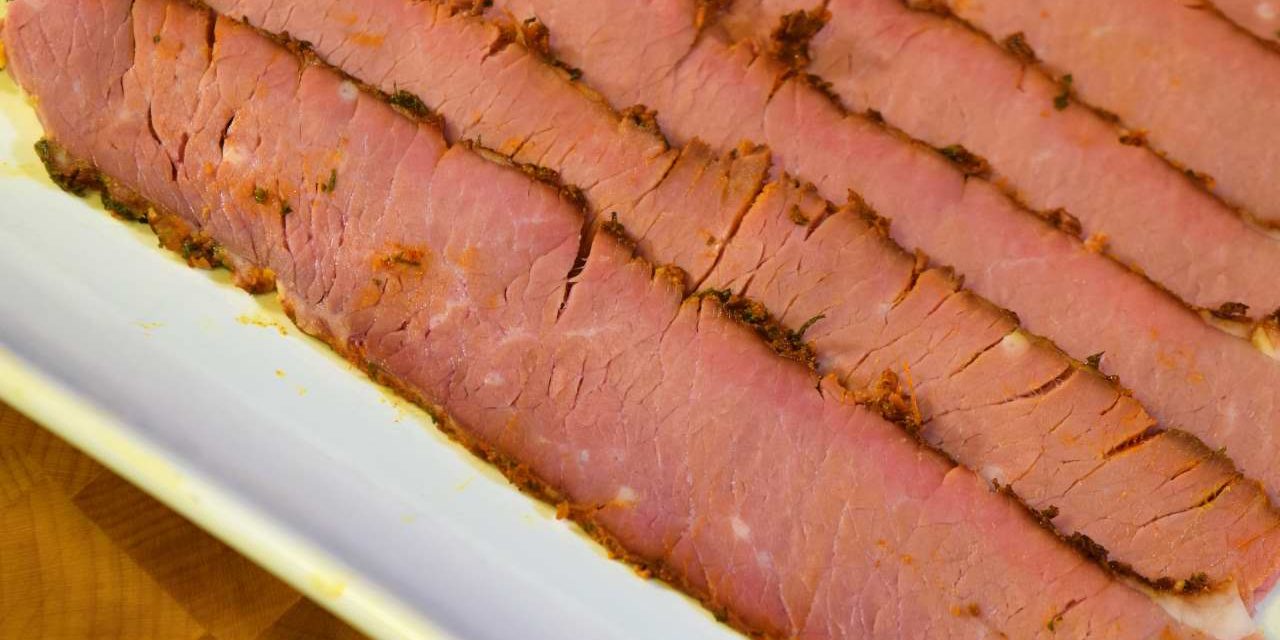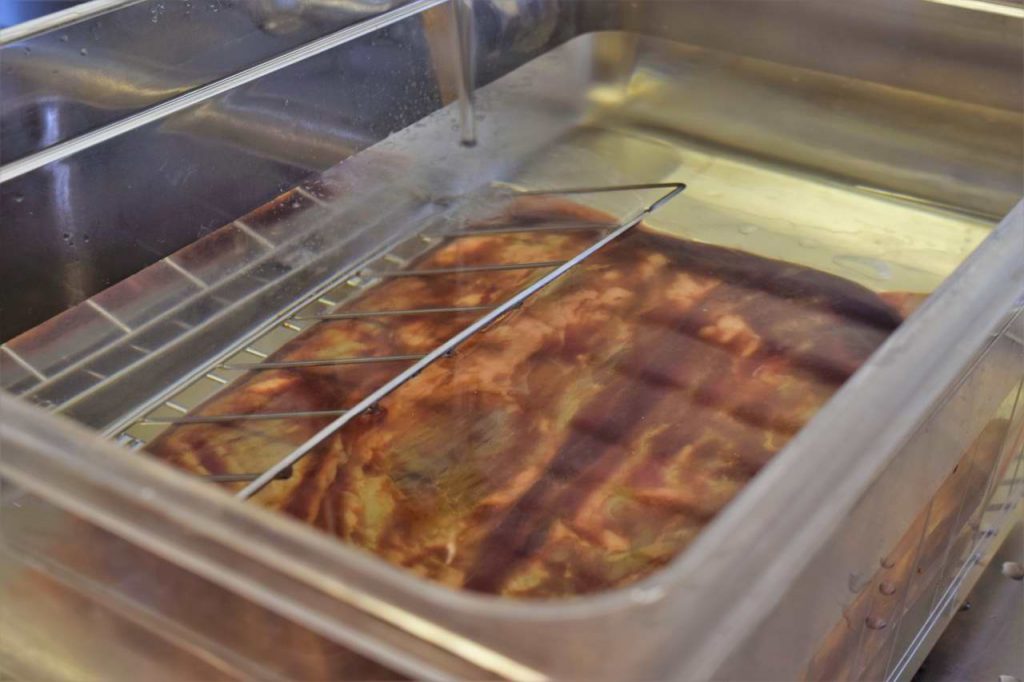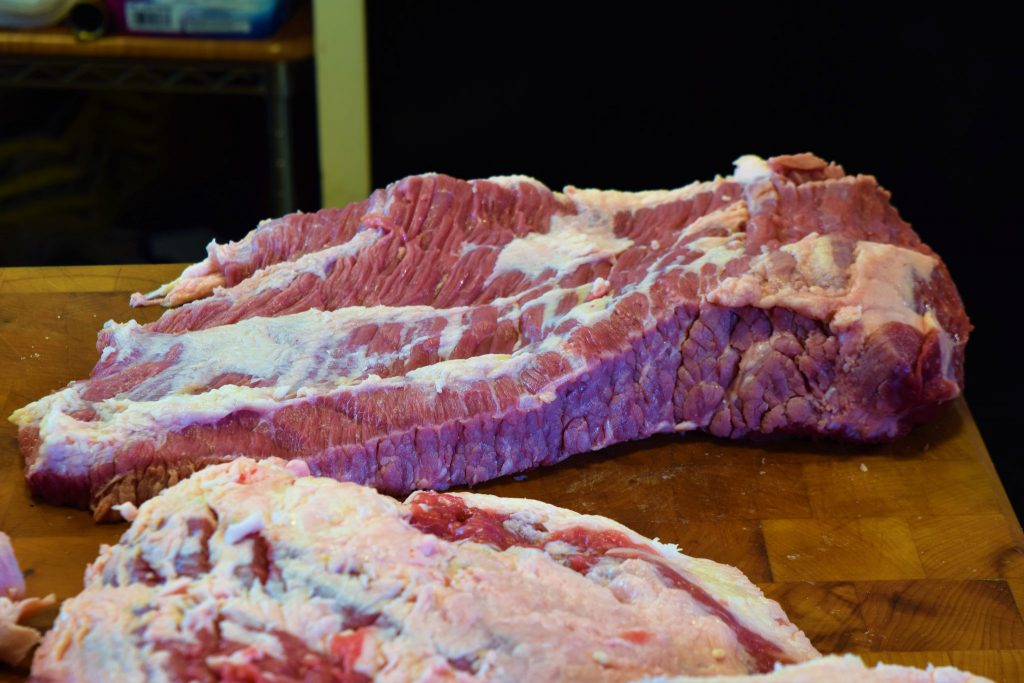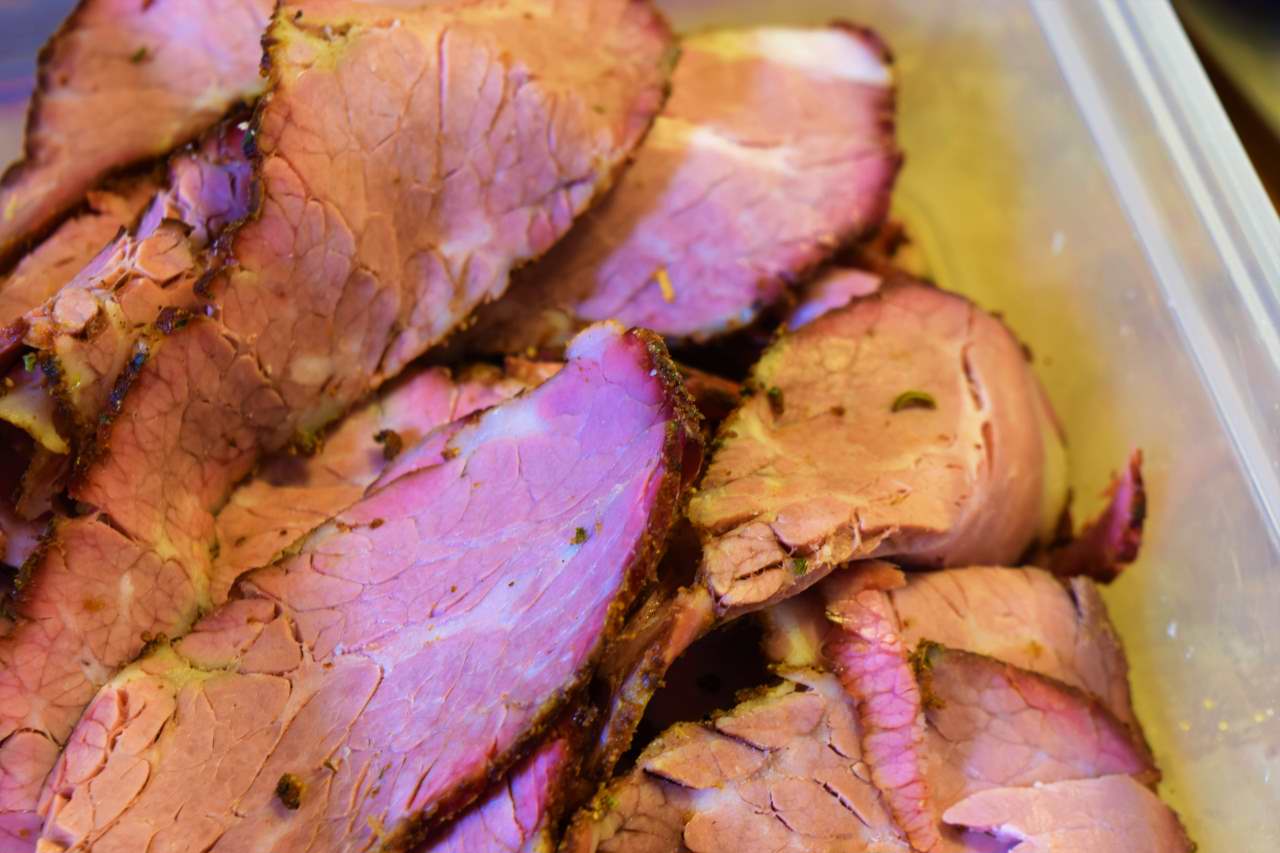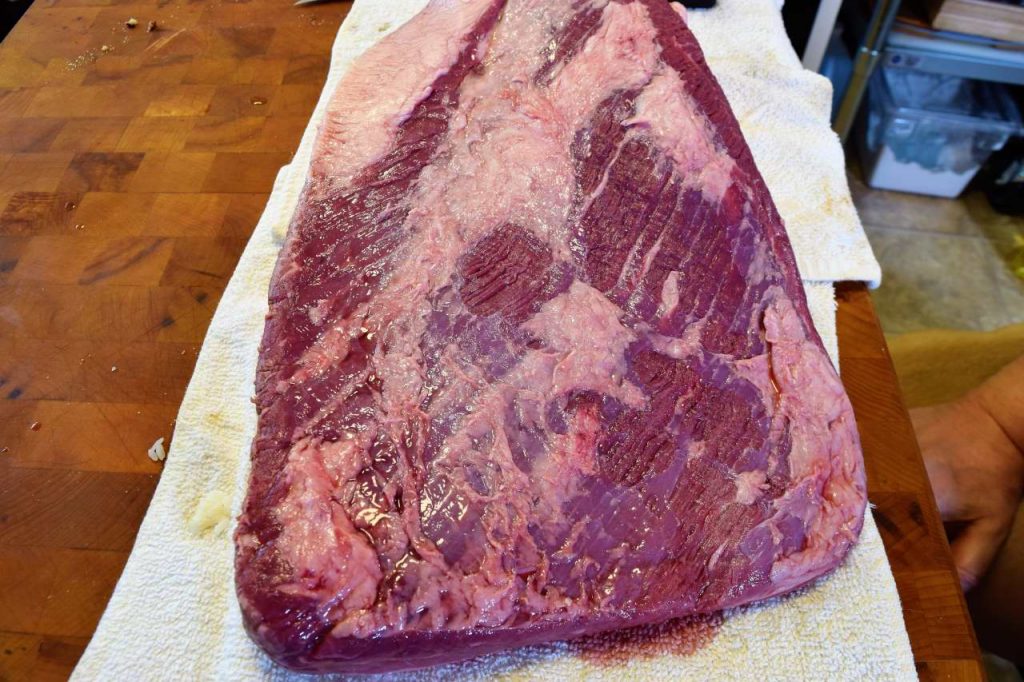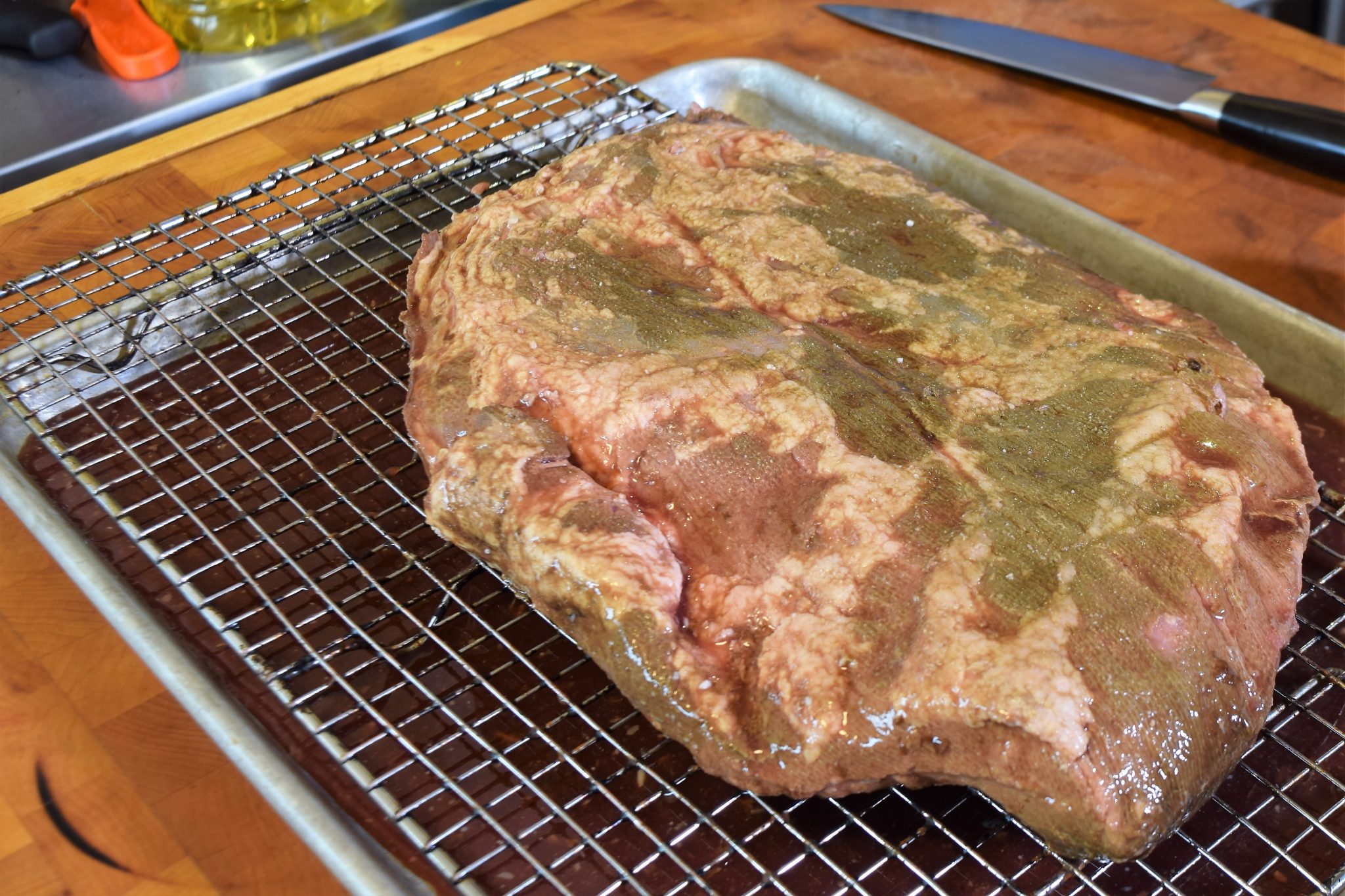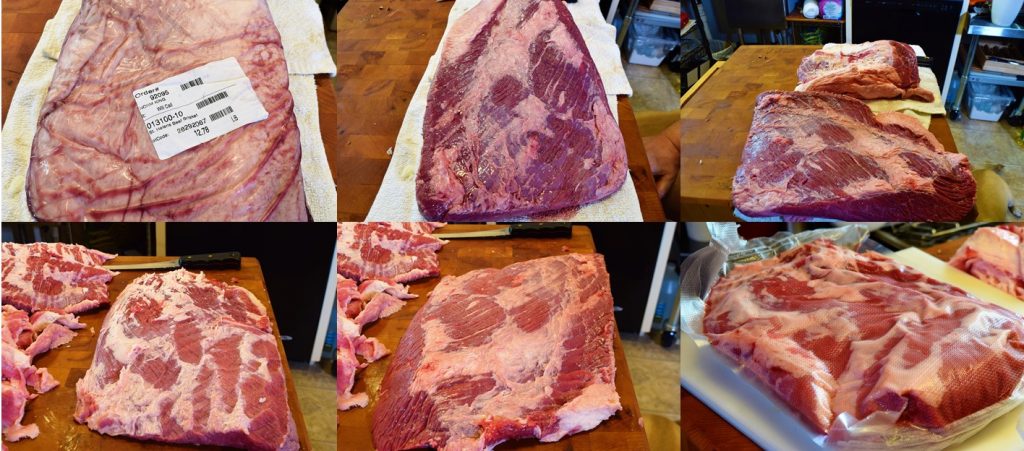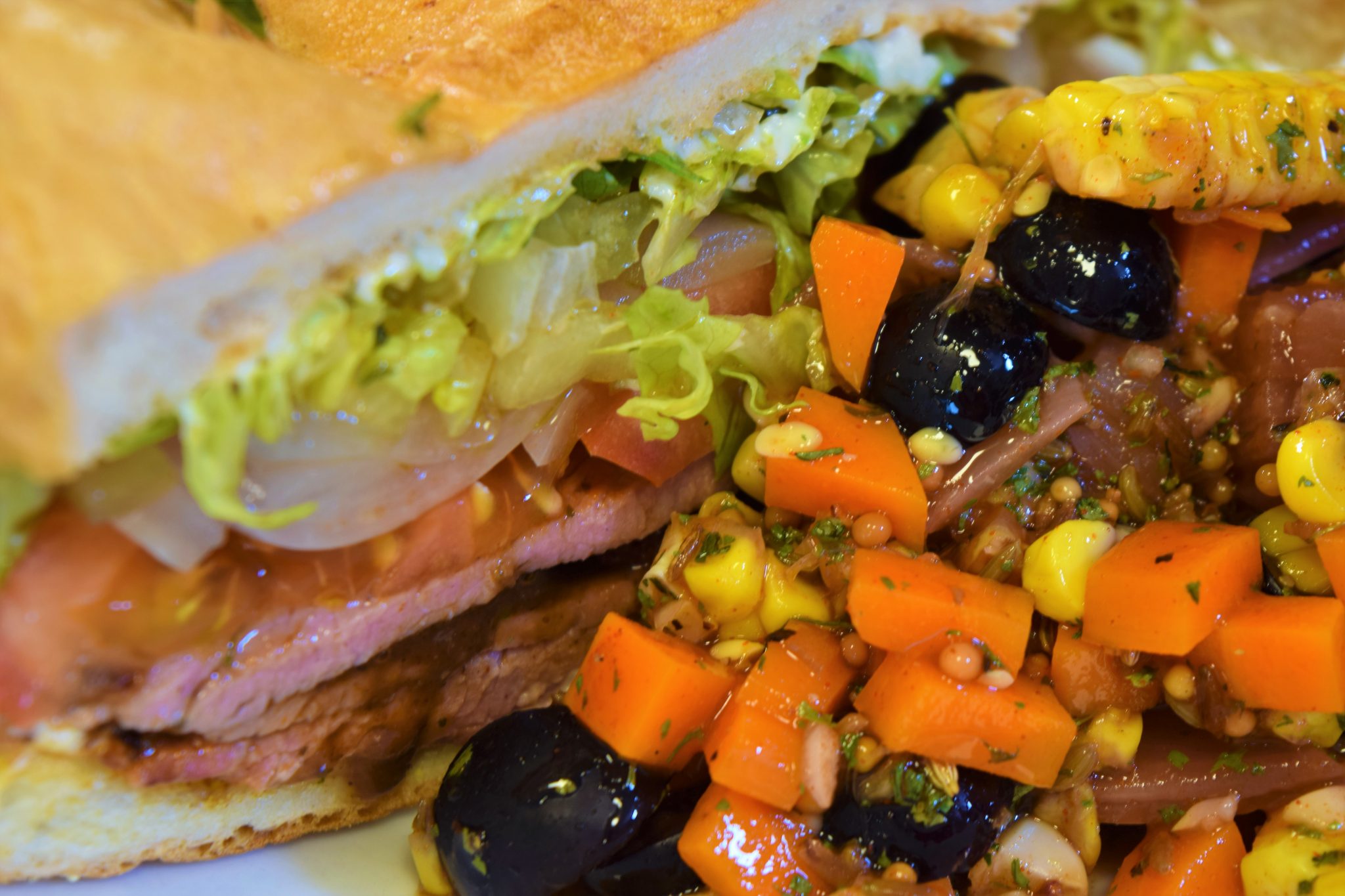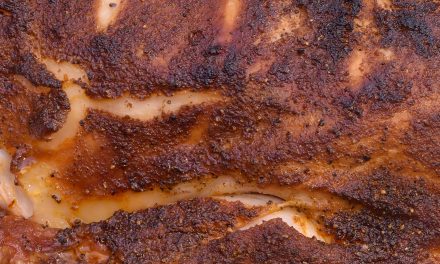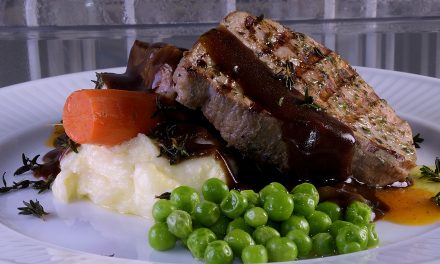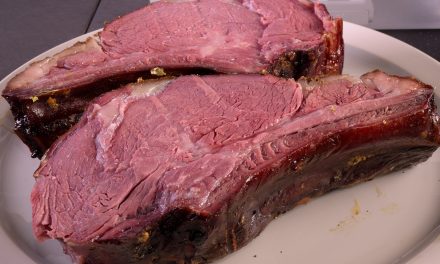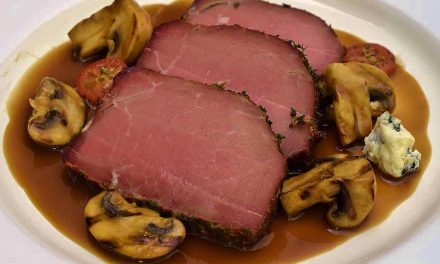The point and the flat of it.
No cut seems to have cultivated so much interest among sous vide and BBQ enthusiasts alike as the humble but iconic beef brisket. The debate over the various characteristics of the point and the flat waxes perpetual, their apparent incongruity with each other always under scrutiny. Separate, or cook together? Cure, and make corned beef or pastrami, or just smoke the whole thing. Cold smoke, or hot smoke? Faux smoke or “real” smoke?
Touching on all the points would make one long article, so we will just show what we did with the flat that remained after we did the recent article on the point, linked HERE.
The two connected cuts are quite different. The point exhibits a very coarse, mottled, almost cellular grain unique to this cut:
SV processed and smoked:
The flat, on the other hand, is much more uniform, and lean:
From the Beginning
No matter how much detail I go into on preparation and presentation, there is always someone who says “where’s the picture or explanation of (THIS)? I guess this is inevitable, but I keep trying to squeeze everything possible into the edit field, excruciating commentary included. Seen below, the St. Helens beef brisket that we acquired from our friends at NickyUSA in Portland (OR).
So, from the beginning, in the slide below, we see the original packaging. Almost 13 lbs./5.5Kg. That’s fairly typical. Lots of waste, too, also typical. The point ended up weighing just over 4 lbs./1.8Kg, , the flat just over 5 lbs./2.25 Kg. I froze the fat, just not willing to let go of all that weight. It can be rendered gently and used for cooking, but it burns, smokes, and stinks at a low temp. It makes good French fries–ONCE, then I ditch it.
You can see the long, uniform, straight grain typical of the cut. I am loathe to cut off much of the fat, a great chef once told me fat on the meat is fine, meat on the fat, not so good. That stuck with me. I managed to seal it up in a big FoodSaver sleeve, using the chamber vacuum, so I got a good suck and seal. Nekkid, y’all know. Not even salt. Indulge me.
Next, into the preheated Lipavi C-20 vessel @
129F/54Cx72 hours.
Protein can be pasteurized even lower than this, but it’s a good idea to allow for equipment error and penetration time to prevent bad things from happening. This temperature is generally considered the lowest point that collagen will convert to gelatin in a measurable way, and without that process, this cut of meat will never get tender. I never thought I would say I had favorite temperatures, but, with sous vide, I do!
After three days, I just siphon the water out of the tank as shown, and the meat rests in the Lipavi L20 rack, without any of the inserts in it, just the handles on the end. Then, refill the tank with cold tap water, which is usually about 70F/21C. If there’s a lot of stuff in the tank (never more than equal volume to the water), I may siphon, fill, and siphon and refill again.
Somebody asked me the other day about reclaiming the water, and you know, that’s a thing. I’m going to try to remember to siphon the water out the window into a bucket next time, right next to our pathetic little garden. Good times!
So, I did refill it again, and then siphoned it again, just to be sure. We don’t want stuff in the fridge getting warm either. As you can imagine, my refrigerator gets a work out.
After the last shock, I siphoned out again, let it drain for a few, and then transfer the meat and rack onto a sheet pan, right into down low in the fridge. Safe and sound. Right next to the brisket that I’m curing. Again, good times.
It’s okay to get busy with things, that flat will stay well preserved for a week easy, even longer. When I get to it, I take it out. Drain the purge, which I promptly over boiled and lost most of. It happens, what can I tell you? We adapt, we move on.
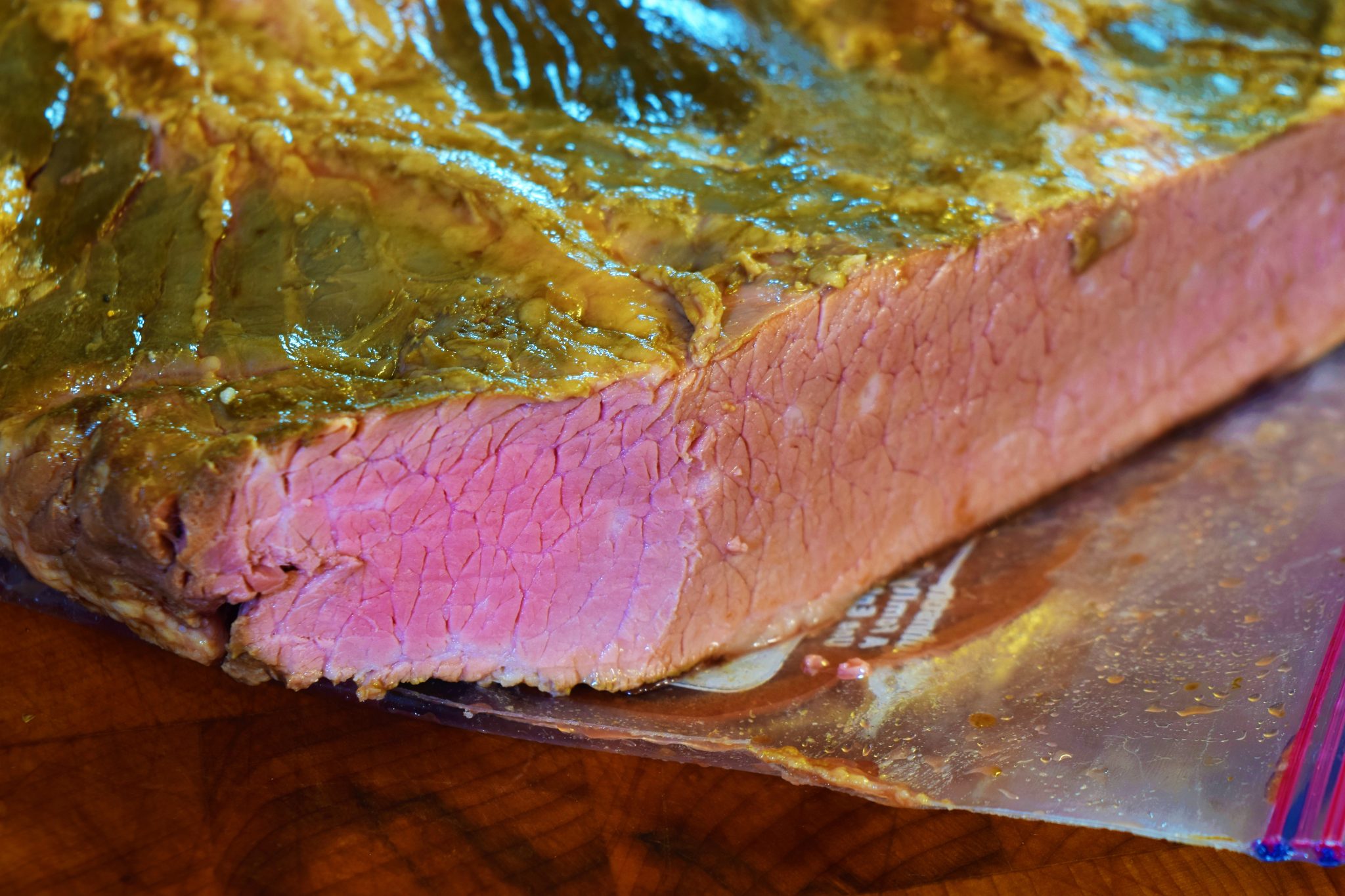 Dry it off, I cut a slice, man, is that like pink or what? Cut cold, this makes for a Medium Rare deli sandwich or whatever. If you cut a steak and scorch it, that pink will dissipate though, because that’s what myoglobin does. If you really want to serve this cut medium rare, don’t shock it, just pull it out of the bag, let the temp drop a few degrees, torch scorch and serve. It’s good just like that. But that’s not what we did. This time.
Dry it off, I cut a slice, man, is that like pink or what? Cut cold, this makes for a Medium Rare deli sandwich or whatever. If you cut a steak and scorch it, that pink will dissipate though, because that’s what myoglobin does. If you really want to serve this cut medium rare, don’t shock it, just pull it out of the bag, let the temp drop a few degrees, torch scorch and serve. It’s good just like that. But that’s not what we did. This time.
I created a special rub for this dish, we’re going to call it:
French Tahiti-Q
By volume:
- salt, one part.
- sugar, one part.
- paprika, one part.
- fennel seeds, one part.
- onion flakes, dehydrated, one part.
- Hondashi granules, one part.
- chervil, dried, two parts.
No pepper. No garlic. I know, blasphemy. Umami.
Sprinkle and press liberally, it’s not overly salty. Push it in, and let it sit on paper or plastic for a few minutes. I use egg white to glue this on sometimes, but it’s not essential, so we did it the easy way. Some people try to use mustard or thick dairy products for the glue, it sounds good. Whenever I do it, that stuff just falls off when it gets hot, so I let it go.
Into the mighty RecTec
I’m getting attached to this thing. I never met a BBQ/Smoker I didn’t like, but I have prohibitive breathing issues (former smoker). BGE’s and the primitives are just too hard on what’s left of my breathing apparatus.
Working in the trade teaches you a lot of things, one of which is not to over examine cooking in process. If you listen to your gray matter, you can feel the love inside the stove, and learn to use the internal clock. Consumption of alcoholic beverages makes this mechanism less accurate, but smoker windows just don’t work, in my experience.
Set the PID to 180F/82C
Come back in three hours. What’s the worst that can happen @180F?
By Jove, I think we got it.
Okay, look at that meat. It’s pink, no Photoshop. Look at the tomato–it’s not glowing. But that meat is not rare. It’s pulling apart, and there’s no pink drip. That color is a symptom of lividity. Exposure to CO and NO causes the color of myoglobin to “fix.” Not to be morbid, but people who die of smoke inhalation have bright red lips and eye lids and extremities as a result of this. Fortunately, this steer was already dispatched for our convenience.
The iconic but meaningless smoke ring is caused by exposure to CO and NO, too. The use of curing salts, which have nitrogen in them, also fix the color of myoglobin, creating the pink of corned beef and bacon and ham and summer sausage, and hey, I made some summer sausage, pics of that later.
Just how flat can flat be? 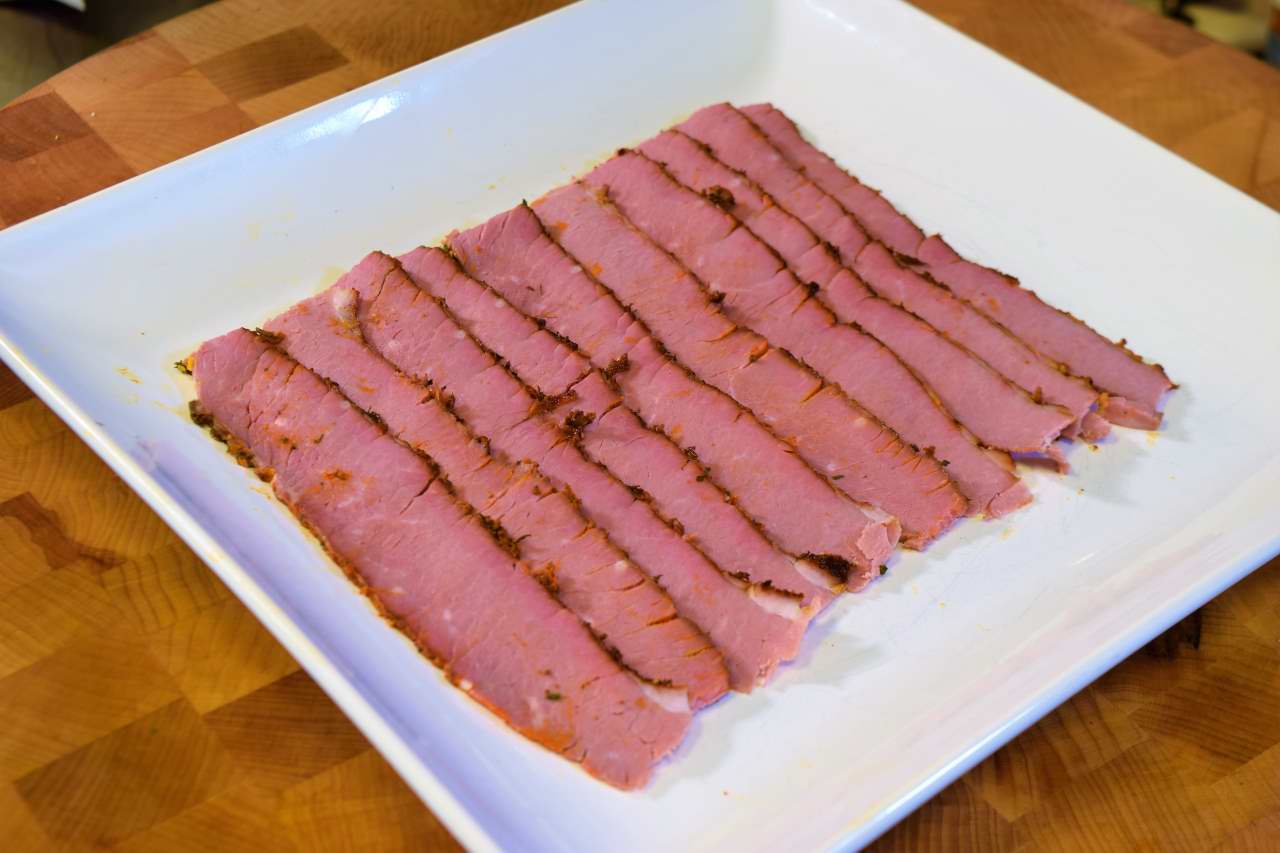
Let’s apply ourselves.
Sandwiches, let there be no shame. If you devoted your day to getting the flat to come out perfect, you may not have had time or even the inclination to make the corn bread, beans, coleslaw, potato salad, green salad, macaron’ and cheese, corn on the cob, biscuits, cherry cobbler, and all the other things that we always took for granted when the women were running the show. How did Mom do it?
Slice some of the meat, shred some lettuce, whatever ya got, EVOO and Balsamic drizzle with a little bit of the rub. Sliced tomatoes, even the hot house kind, why be a snob? Sous vide onions are a thing, seal them up, one hour @183F/84C, shock them. Good for many things, onion rings, let your palate sing. They’re deliciously soft, don’t fly all over and are less hot and more sweet. Mayonnaise, and some B2 steak sauce.
Then this crazy salad, I quick pickled a red onion sv with some vinegar, sugar, no water, mustard seeds, fennel seeds, pepper, salt, shock, and cut coarse. Purplish. SV carrots, SV corn, I keep that stuff around in the summertime. SV apricots with vanilla, and I cut some black grapes in half, some rub, little oil, yada yada, bada boom!
Inspiration is a funny thing. It’s soft, it’s nuanced, it’s not usually loud. Sometimes, you just look in the fridge, and some voice says “that stuff will work, just do it. Be prepared to name it.” Still drawing a blank on that.
As always, stay tuned. I got lots of stuff in the fridge, and lots of stuff on the horizon, too. Hope you dug it.
Norm

